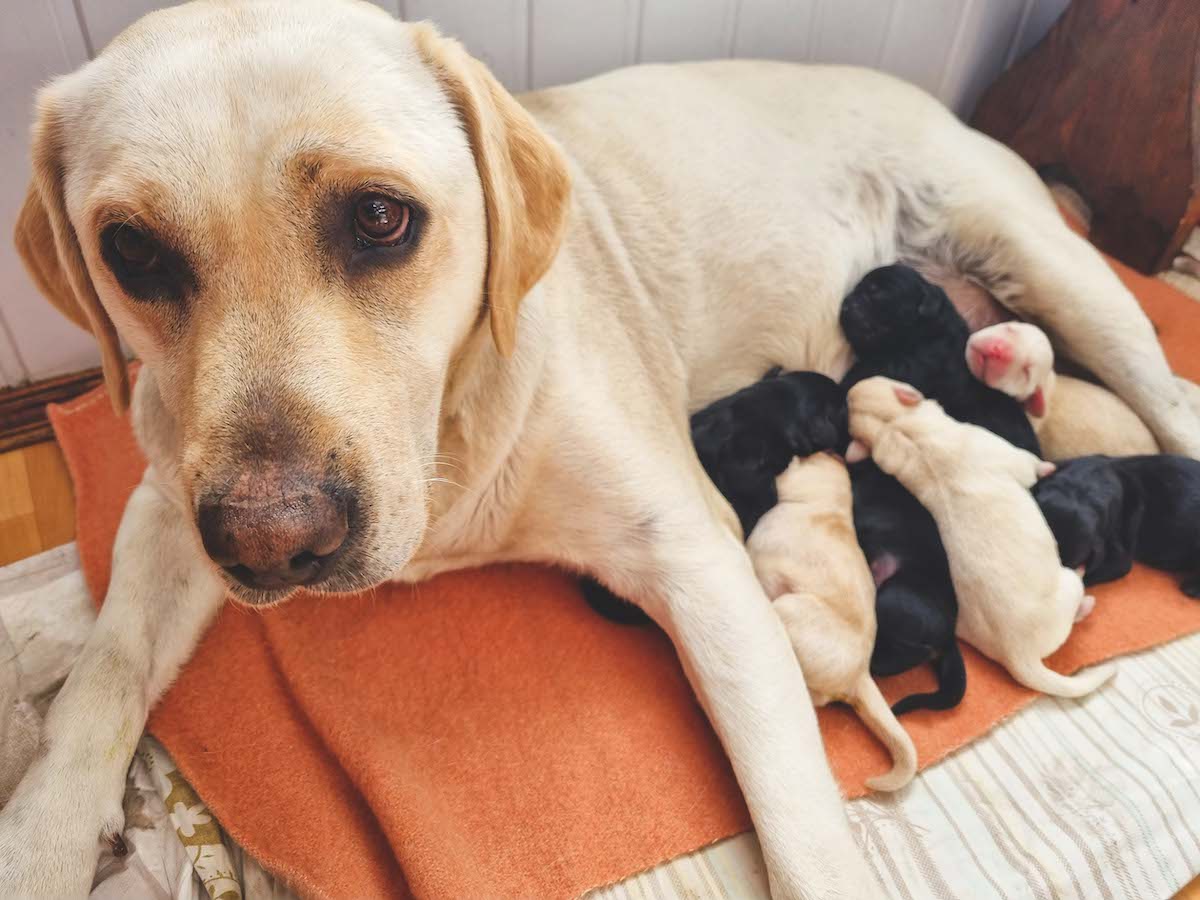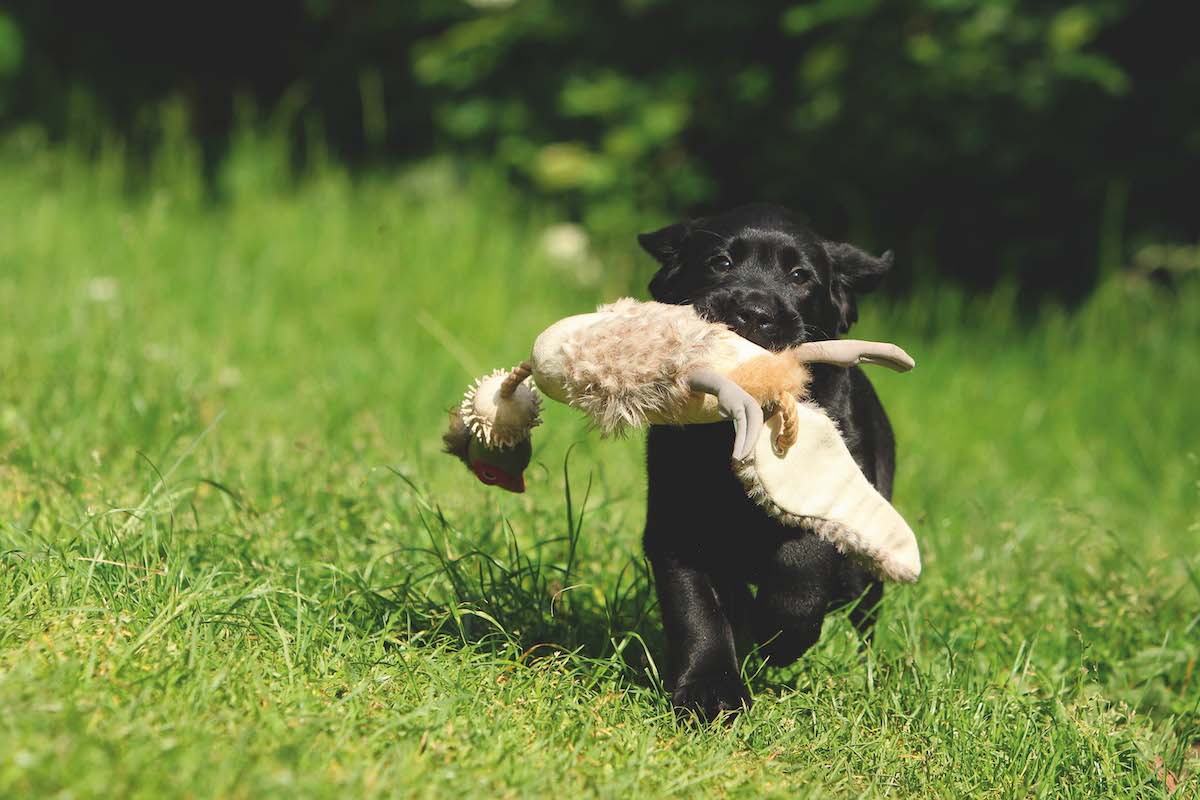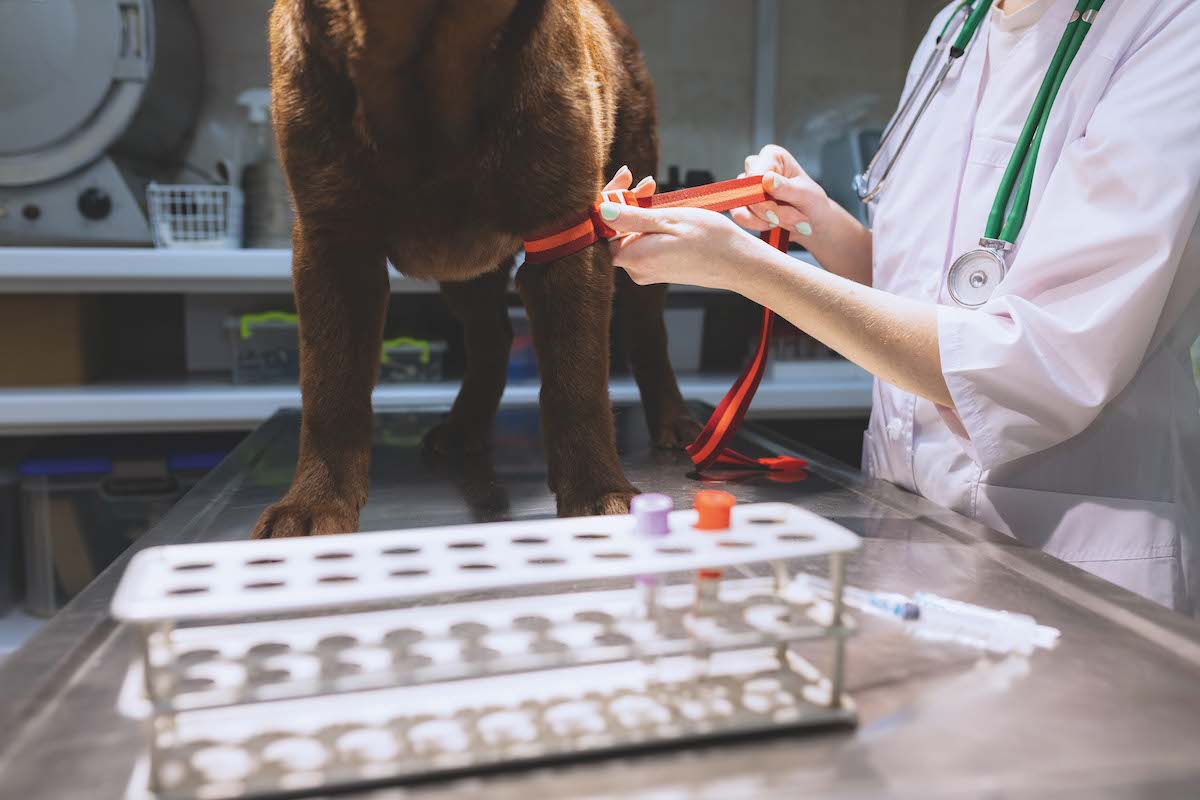Win CENS ProFlex DX5 earplugs worth £1,149 – enter here
Centronuclear myopathy in dogs: why it’s bad news
 Group of first day golden retriever puppies natural shot and mom
Group of first day golden retriever puppies natural shot and mom
“My friend recently bred a litter of labradors and one puppy had to be put down at eight weeks due to Centronuclear myopathy (CNM). What is this?”
Jim Ede, Cambridgeshire
Explaining Centronuclear Myopathy
Centronuclear myopathy (CNM) is a hereditary myopathy of labradors resulting from a mutation in a gene that is involved in the production of long-chain fatty acids, which are thought to be involved in muscle homeostasis. The disease typically manifests in puppies around the age of two to five months. The condition has also been called type II muscle fibre deficiency, autosomal recessive muscular dystrophy and hereditary myopathy. (Read more on labrador health problems here.)
What about the genetics?
Centronuclear myopathy disease of labrador retrievers was first discovered in the 1970s by Drs Laurent Tiret and Stephane Blot, working at the Alfort National Veterinary School, France. It is an autosomal, recessive gene with both sexes equally affected. When both parents are carriers (and they will look and behave totally normally) about one in four of their offspring will be affected, while, statistically at least, 50% will be symptomless carriers. This information is important for your friend to consider, especially if he intends on breeding in the future (a ‘clear’ sire will be required), and so that he can advise prospective puppy owners of the issue.

Puppies with CNM will not be able to keep up with their healthy litter mates
What happens?
Centronuclear myopathy results in the abnormal development of muscle fibres causing a deficiency of type II muscle fibres. Clinical signs are seen in puppies as early as two weeks old but generally from six weeks to six months of age, and they can be very severe. Signs are progressive until adulthood, when they tend to stabilise (if the puppy survives to this point). Typically, muscle weakness is obvious and this is especially bad when puppies are exposed to stress, exercise or a cold environment. Therefore, they generally stand out clearly from the rest of the litter, as they are simply unable to keep up. Skeletal muscle atrophy, incoordination and stunted growth are common. A stiff bunny hop gait is often described. There is an absence of both the triceps and patellar reflexes and this can be diagnostic.
Megaoesophagus is not very obvious on plain X-ray
Add some barium and the dilated oesophagus is obvious
Frequently, megaesophagus results, where the oesophagus (the muscular tube that carries food from the mouth to the stomach) dilates and becomes flaccid, making swallowing difficult and ineffective. Food collects in the enlarged oesophagus, causing discomfort, salivation and regurgitation. Inhalation pneumonia can then occur, which may be fatal.

A blood sample can be used to test for CNM in potential breeding stock
How is it diagnosed?
The clinical signs and history are obviously relevant but confirmation can be made by looking for creatinuria (increased concentration of creatine in urine, which results from muscle breakdown), muscle biopsy and electromyography.
What’s the outcome?
All in all, the outlook is not rosy. Affected dogs have no chance of recovering sufficiently to work. Supplementation of the diet with L-carnitine may help some patients. With very careful nursing, feeding from a height, keeping the head held high for 15 minutes or so after feeding, avoiding stress, strenuous exercise and cold, and a great deal of good luck, some individuals are able to reach adulthood and have enough function and quality of life to be kept as pets. But not all, as you have regrettably discovered.
What else?
Testing of prospective breeding stock is crucial. The same sample can be used to test for Centronuclear myopathy, progressive retinal atrophy (PRA), skeletal dysplasia 2 (SD2) and exercise-induced collapse (EIC). A blood sample or cheek swab is used. (Read health checks you must carry out before breeding labradors.)
• The health section of the Kennel Club website contains lists of clear/carrier and affected labradors.
•Microchipping has ensured more accurate identification of tested dogs.
•DNA testing should be performed before hip and elbow scheme testing, as the latter cannot be done until dogs are one year old, requires general anaesthesia and is more expensive.
• Prospective purchasers should insist on seeing original test certificates prior to taking a puppy home. If the dam is a carrier, the sire must be clear (and vice versa).
Related Articles
Get the latest news delivered direct to your door
Subscribe to Shooting Times & Country
Discover the ultimate companion for field sports enthusiasts with Shooting Times & Country Magazine, the UK’s leading weekly publication that has been at the forefront of shooting culture since 1882. Subscribers gain access to expert tips, comprehensive gear reviews, seasonal advice and a vibrant community of like-minded shooters.
Save on shop price when you subscribe with weekly issues featuring in-depth articles on gundog training, exclusive member offers and access to the digital back issue library. A Shooting Times & Country subscription is more than a magazine, don’t just read about the countryside; immerse yourself in its most authoritative and engaging publication.







